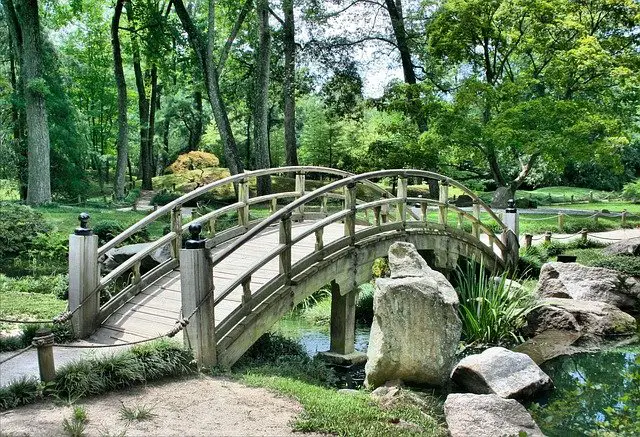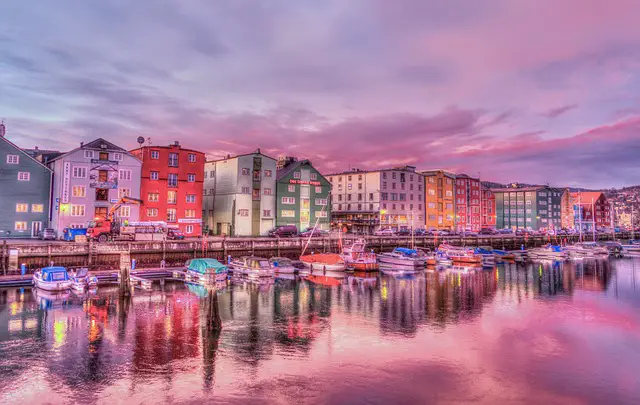Landscape architecture and urban design may seem similar at first glance, but they are two different disciplines with their own unique roles and responsibilities. Landscape architects work to create beautiful outdoor spaces that are both functional and sustainable while urban designers focus on creating cohesive communities by addressing issues related to transportation, infrastructure, housing, and more.
What is landscape architecture?
(Image by JamesDeMers from Pixabay)

Landscape architecture is the art and science of designing outdoor spaces, including parks, gardens, campuses, and public plazas. At its core, landscape architecture focuses on creating harmonious relationships between people and their surrounding environments. This involves considering a wide range of factors such as ecology, aesthetics, social dynamics, sustainability and functionality.
A landscape architect might work on projects ranging from small courtyards to large-scale regional plans. They often collaborate with other professionals such as architects or engineers to ensure that all elements of the design are integrated seamlessly. Some common tasks for a landscape architect may include site analysis; conceptual design; construction documentation; planting design; hardscape design (e.g., paths and walls); project management.
By prioritizing sustainability principles in their designs and recognizing the importance of natural systems like water cycles or soil conservation practices Landscape architects can help protect our planet while also creating beautiful places for people to enjoy.
What is urban design?
(Image by Michelle Raponi from Pixabay)

Urban design is the process of designing and shaping the physical environment of cities, towns, and other urban areas. It involves the planning and management of land use, transportation systems, public spaces, buildings, and infrastructure to create functional and attractive urban environments.
In essence, it is about making cities work better for people by creating livable neighborhoods that are safe, sustainable, accessible, and aesthetically pleasing. Urban designers work closely with architects, planners, and engineers to create comprehensive plans that take into account social, economic, and environmental factors.
The focus of urban design is on creating vibrant public spaces where people can gather, socialize, and engage in various activities.
It also seeks to promote walkability, bicycle-friendliness, and access to public transit as a way to reduce reliance on private cars.
Overall, the goal of urban design is to create places that are both functional and beautiful, integrating natural features with man-made structures in a harmonious manner.
This requires careful consideration of issues such as sustainability,historic preservation,cultural heritage,tourism,demographics,resiliency,and community engagement.
Landscape architecture Vs. Urban design – Key differences
Landscape architecture and urban design are two different fields of study, but they share some similarities. While landscape architects mainly focus on designing outdoor spaces like parks, gardens, and campuses, urban designers have a broader scope that includes the planning and development of entire cities.
One key difference between landscape architecture and urban design is their scale. Landscape architects usually work at a smaller scale than urban designers. They create designs for specific spaces while considering factors such as climate conditions, soil types, water management systems etc., whereas Urban designers develop designs that take into account larger areas with more complex environmental considerations.
Another significant difference between these two fields is the type of projects they handle. As mentioned earlier, landscape architects mostly deal with open-air projects like public parks or residential landscapes whereas Urban Designers are often involved in large-scale projects like transportation networks or city-wide zoning plans.
Landscape architecture typically focuses on creating aesthetically pleasing outdoor spaces while also ensuring practical functions such as pedestrian safety and accessibility to people with disabilities. In contrast, Urban Design aims to balance social equity concerns including environmental sustainability along with economic viability when designing urban areas.
Both professions require specialized knowledge in various aspects related to geography; environment; social sciences; engineering & construction techniques just to name a few!
Can landscape architects be urban designers?
Both landscape architecture and urban design are distinct fields that complement each other. Landscape architects primarily focus on designing outdoor spaces such as parks, gardens, public places, etc., while urban designers work on creating functional and attractive communities by planning the physical layout of cities.
However, due to their similarities in terms of their approach towards designing open spaces within a city, there is often an overlap between these two fields. Landscape architects can definitely be urban designers since they possess similar skill sets required for the job.
Landscape architects have a keen eye for aesthetics and functionality when it comes to crafting outdoor spaces that cater to people’s needs. Urban design requires similar skills but with a broader scope where they need to consider factors like transportation systems, housing developments, zoning regulations among others.
Therefore if you’re passionate about both landscape architecture and urban design – working as an urban designer or pursuing further studies in this field could be your calling!
Examples of Landscape architecture
Landscape architecture is a broad field that covers various aspects of designing outdoor environments. From parks and gardens to campuses and residential areas, landscape architects work on projects that shape the natural environment into functional spaces.
Some examples of landscape architecture include the Central Park in New York City, which serves as an urban oasis for residents and visitors alike. Designed by Frederick Law Olmsted and Calvert Vaux in 1858, this park features an extensive network of walking paths, lakes, gardens, and public spaces.
Another example is the High Line in Manhattan, which was transformed from an abandoned railway track into a unique elevated park. This project involved careful planning and engineering to create a green space that offers breathtaking views of the city skyline.
The Chicago Riverwalk is another great example of landscape architecture at work. The revitalization project aimed to transform an underutilized area along the riverbank into a vibrant public space with restaurants, shops, boat tours, fishing piers and kayak rentals.
In summary, these are just some examples demonstrating how Landscape Architecture can transform ordinary places into extraordinary ones through thoughtful design solutions.
Examples of Urban design
Urban design is a vast field that encompasses various aspects of the built environment. It involves designing and planning cities, towns, neighborhoods, and public spaces to make them functional, attractive, and sustainable. Here are some examples of urban design.
One example of urban design is High Line Park in New York City. The park was created on an abandoned elevated railway track that had been unused for decades. Urban designers repurposed the track into a beautiful park that features walking paths, seating areas, gardens, and public art installations.
Another example is Millennium Park in Chicago. This 24-acre park transformed a former rail yard and parking lot into a vibrant green space with stunning architecture such as the iconic Cloud Gate sculpture by Anish Kapoor.
The third example is Barcelona’s Cerdà Plan which reimagined the city by breaking away from traditional street grids with its octagonal blocks connected by diagonal streets creating more open spaces for pedestrians.
Lastly but not least is Singapore’s Gardens by the Bay project – A world-renowned garden complex featuring futuristic structures like Supertree Grove & Conservatories all designed to enhance local biodiversity while promoting ecological sustainability
These projects represent just a few examples among many others where urban designers have played critical roles in transforming landscapes into thriving environments through effective design planning techniques.
What is the scope of urban design in architecture?
Urban design is an essential aspect of architecture, as it focuses on the overall aesthetic and functional quality of urban environments. It aims to create spaces that are not only visually appealing but also promote sustainability, accessibility, and livability.
The scope of urban design in architecture is vast. Urban designers work closely with architects, planners, engineers, and other professionals to create master plans for cities or specific areas within a city. They analyze the existing landscape and infrastructure and develop strategies to improve them while considering environmental impact.
One key area where urban design comes into play is in creating public spaces such as parks, plazas, streetscapes etc., which provide opportunities for social interaction and community building. These spaces help break down barriers between people by providing places where they can connect with one another.
Another important aspect of urban design is transportation planning. Urban designers aim to create accessible public transportation systems that reduce congestion on roads while improving mobility for all users.
The scope of urban design in architecture goes beyond just creating beautiful buildings; it involves designing entire communities or regions that are sustainable both environmentally and socially. By working together with architects and other professionals involved in city planning projects – we can create vibrant cities that meet the needs of their inhabitants while being mindful of our planet’s resources!
What are the disadvantages of being a landscape architect?
While landscape architecture is a rewarding and fulfilling career, it does come with its own set of challenges. One major disadvantage of being a landscape architect is the long hours and demanding deadlines that are often required to complete projects on time. The work can be physically and mentally exhausting, especially during construction phases where you may have to spend long hours onsite.
Another challenge faced by landscape architects is managing client expectations while adhering to strict budgets. Clients may want extravagant designs that exceed their budget constraints, which can create conflicts between the client’s vision and practicality.
Moreover, working as a landscape architect requires strong communication skills since they often collaborate with other professionals like architects, engineers, planners and contractors.
Furthermore, weather conditions also play an important role in affecting this field of work. Inclement weather conditions such as extreme heat or cold temperatures could lead to project delays or even cancellations.
The pay scale for entry-level positions in this field is comparatively lower when compared to other professions like engineering or architecture. However with experience comes higher compensation packages but getting there takes time.
Despite these challenges faced by landscape architects , those who possess creativity along with passion for design will find great satisfaction in creating beautiful outdoor spaces that benefit people’s well-being while promoting environmental sustainability.
Featured Image By – Gerd Altmann from Pixabay








